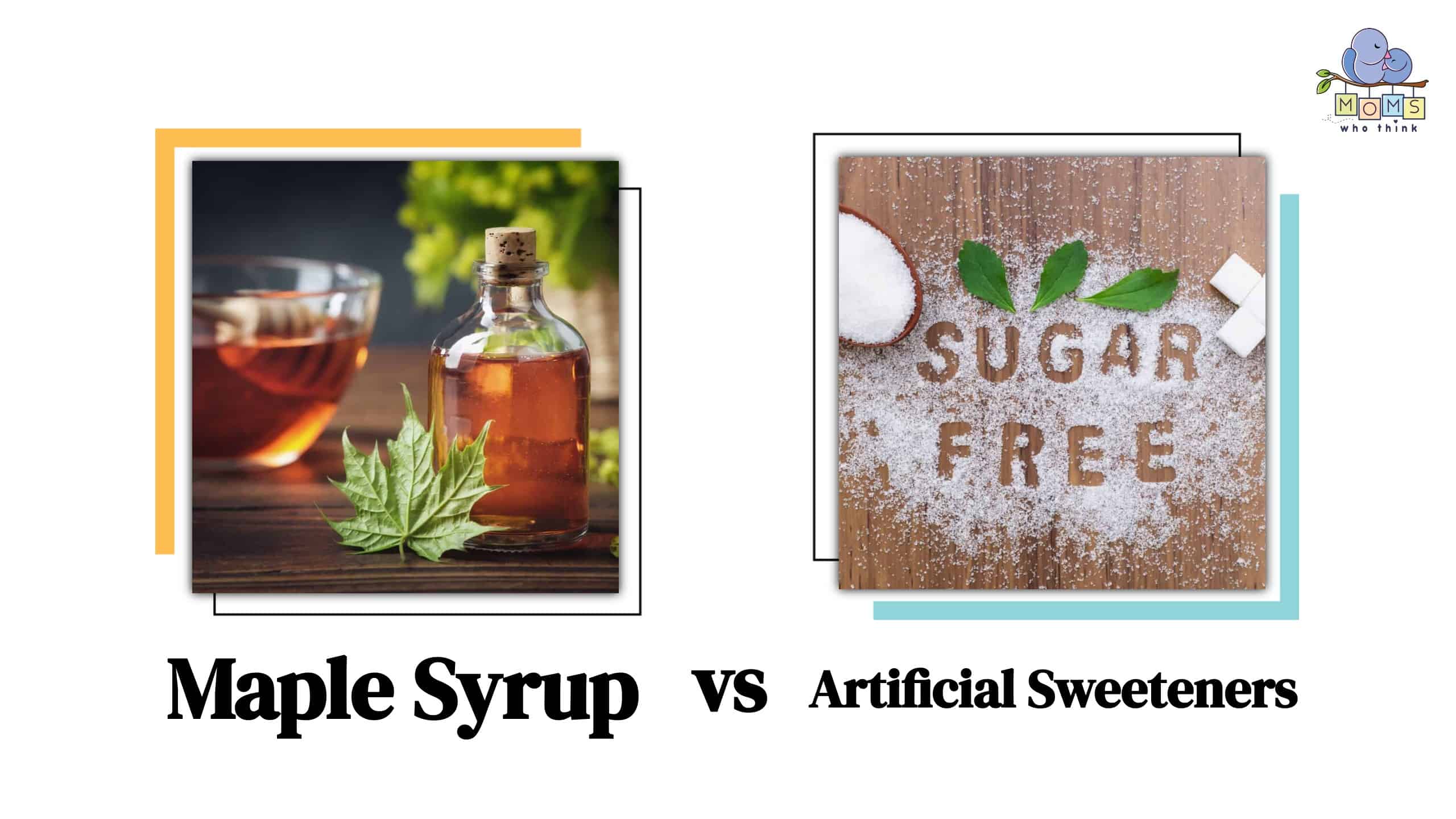When deciding between maple syrup vs. artificial sweeteners for your health, it’s clear that maple syrup offers a naturally sweet flavor. It’s true both are processed foods, but maple syrup offers key nutrients, is gentler on your body, and is easier to digest without the harmful effects often linked with artificial sweeteners. And while many people turn to artificial sweeteners as a way to cut down on sugar – to satisfy their sweet tooth – without worrying about the calories, is this approach really the better option for you?
This article takes an in-depth look into key factors essential for making an informed decision about your health when faced with the choice of maple syrup vs. artificial sweeteners. So, let’s dive in!
Maple Syrup vs. Artificial Sweeteners: Key Differences
The main key difference between the two is that maple syrup is a natural sweetener that is easily absorbed in your body.
On the other hand, artificial sweeteners are just what their name implies: sugar that is not real. Also called sugar substitutes, these are substances that are used instead of natural sugar to sweeten foods and beverages. Artificial sweeteners are regulated by the U.S. Food and Drug Administration (FDA).
The Food Additives Amendment to the Food, Drug, and Cosmetic Act, which was passed by Congress in 1958, requires the FDA to approve food additives such as artificial sweeteners before they can be made available for sale in the United States.
What is Maple Syrup?
Made from boiled-down maple tree sap, it contains many minerals. It takes a whopping 40 gallons of sap to make just one gallon of maple syrup! It is about 3 times as sweet as regular sugar.
- The must-have convenient reference guide for every home cook!
- Includes more than 8,000 substitutions for ingredients, cookware, and techniques.
- Save time and money on by avoiding trips to grab that "missing" ingredient you don't really need.
How Does Maple Syrup Taste?
Maple syrup has three roasted flavor levels: light, medium, and strong. Light roasted is similar to a golden sugar, chicory, or toast flavor. Some people say it has a buttery popcorn flavor. Medium flavor tastes like cooked sugar and caramelized. The strong flavor has a robust taste of burnt wood, ground coffee, brown coffee beans, or even chocolate. Yum!
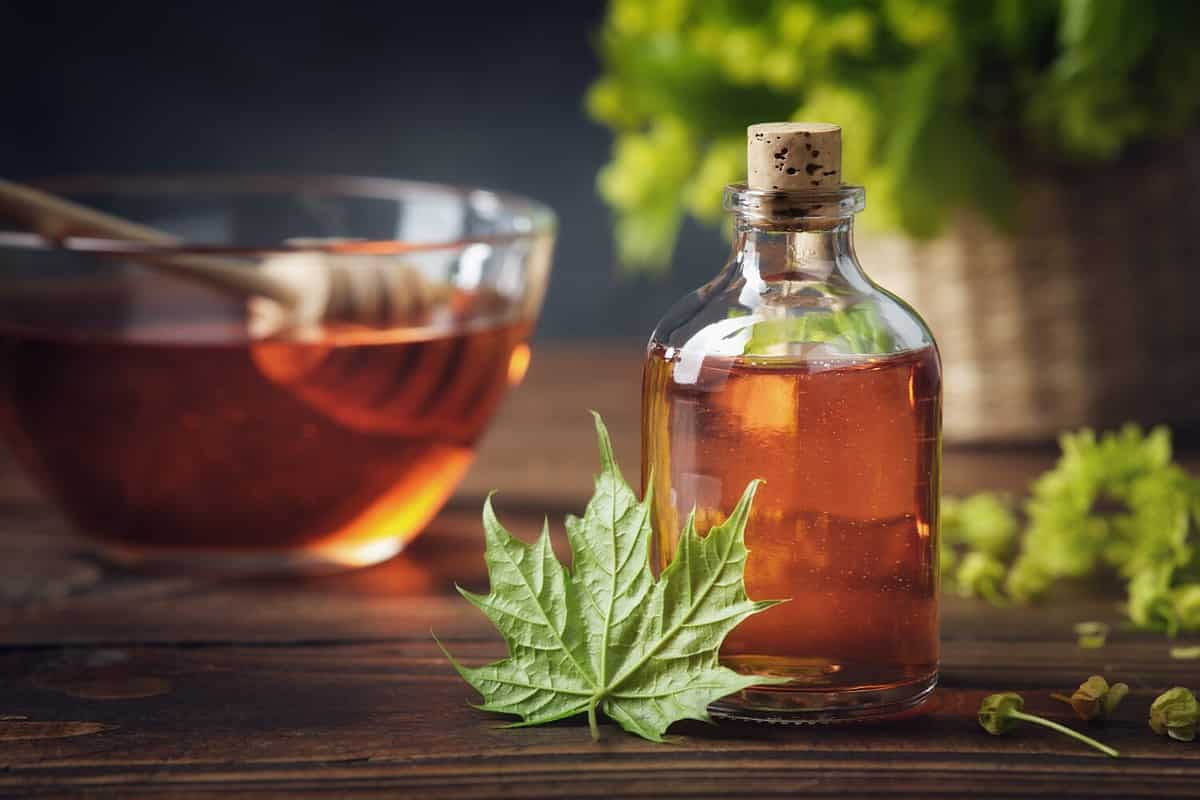
©Chamille White/Shutterstock.com
Benefits of Maple Syrup
This natural sweetener is rich in antioxidants such as polyphenols and compounds like quercetin, which can help fight off harmful free radicals that can wreak havoc on your body.
It also contains trace amounts of health-boosting nutrients like manganese, zinc, and calcium. Its potential anti-inflammatory properties are worth noting, as certain compounds in maple syrup, such as polyphenols and plant lignans, could help fight inflammation in your body.
The National Institutes of Health published research that also suggests maple syrup might act as a prebiotic, promoting the growth and activity of beneficial gut bacteria that contribute to digestion and immune function.
Now, aside from its unique flavor and the fact that maple syrup doesn’t contain any artificial additives and preservatives, it’s a healthier alternative to use in a variety of recipes compared to artificially processed sweeteners.
A Note on Maple Syrup
With any sweetener, moderation is the key. While maple syrup gives you carbohydrates in the form of sugars, it doesn’t contain fiber. That means it can cause swings in your blood sugar and insulin levels.
What Are Artificial Sweeteners?
These are man-made substances that sweeten food and beverages. They usually have little to no calories. Currently, there are six artificial sweeteners that are approved by the FDA:
Aspartame
Sold under the brand names NutraSweet®, Equal®, and Sugar Twin®, it is one of the few artificial sweeteners that contains calories. People don’t generally use a lot of it in one serving. Aspartame is not heat stable and loses its sweetness when heated, so it typically isn’t used in baked goods.
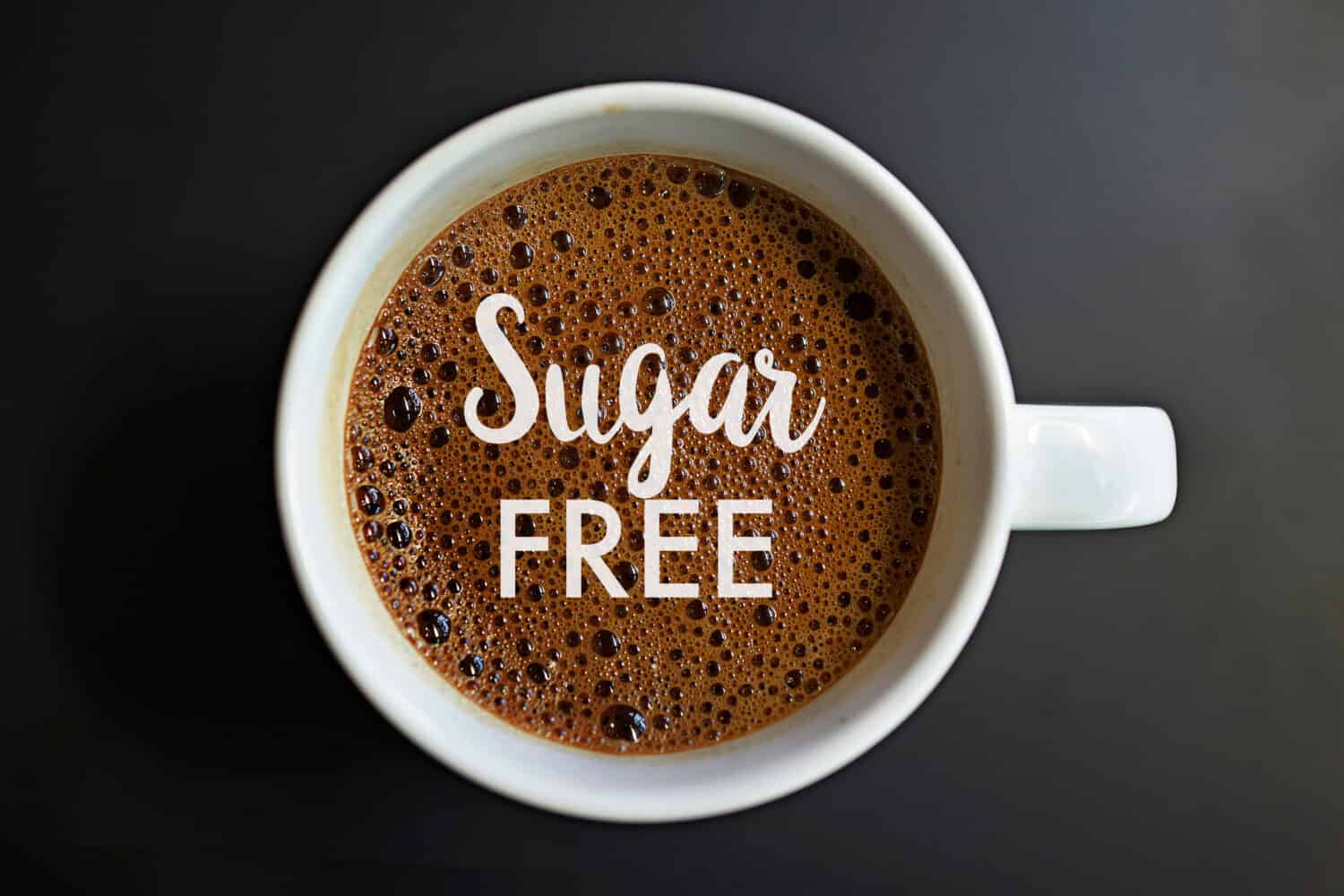
©TY Lim/Shutterstock.com
Saccharin
Sold under the brand name Sweet’N Low®, Sweet and Low®, Sweet Twin®, and Necta Sweet®. It has a very sweet taste and doesn’t contain any calories.
Now, here’s what you may not know about saccharin. Although in the early 1970s, saccharin was linked to the development of bladder cancer in rats, multiple human studies – initiated by Congress – have shown no connection with cancer for humans. That’s why in 2000, the National Toxicology Program of the National Institutes of Health reported saccharin no longer needs to have a warning label.
Sucralose
Sold under the brand name Splenda®, it doesn’t contain any calories. Sucralose is heat stable, meaning it stays sweet even when used at high temperatures during baking, making it suitable as a sugar substitute in baked goods.
Acesulfame K
Also known as acesulfame potassium or Ace-K. It's brand names are Sunett® and Sweet One®. It doesn’t contain any calories, and it is often combined with other sweeteners. You can find Ace-K in foods, beverages, and pharmaceutical products around the world.
Neotame
Made by NutraSweet Company, Neotame doesn’t have any calories. You can find it in diet soft drinks and low-calorie foods. It is also heat stable.
Advantame
This is one of the most recently FDA-approved artificial sweeteners. It is very sweet and comes from aspartame. You can find Advantame in chewing gum, gelatins, puddings, processed fruits and fruit juices, and baked goods. It has zero calories and is also heat-stable.
5 Common Uses for Artificial Sweeteners
1. Beverages: Often used to sweeten beverages such as soft drinks, flavored water, sports drinks, and powdered drink mixes.
2. Baking and Cooking: Cakes, cookies, bread, sauces, and marinades.
3. Desserts: Pies, cheesecakes, custards, and mousse.
4. Packaged Foods: Some examples include sugar-free snacks, candies, and desserts. Make sure you read the labels to know what you're putting into your body.
- The must-have convenient reference guide for every home cook!
- Includes more than 8,000 substitutions for ingredients, cookware, and techniques.
- Save time and money on by avoiding trips to grab that "missing" ingredient you don't really need.
5. Low-Calorie and Sugar-Free Products: This is a very popular ingredient in low-calorie or sugar-free products such as diet sodas, ice creams, yogurts, and protein bars.
A Note on Artificial Sweeteners
According to the National Cancer Institute, there is no clear evidence that artificial sweeteners on the market in the United States are related to cancer risk in humans. However, some studies performed on laboratory rats link aspartame and saccharin to cancer.
On the other hand, the Center for Science in the Public Interest (CSPI) discourages the use of artificial sweeteners.
Aspartame (also known as NutraSweet®, Equal®, and Sugar Twin®), is of particular concern because it contains phenylalanine (50%), aspartic acid (40%), and methanol (10%), three well-recognized neurotoxins. The following are just some of the symptoms associated with the consumption of aspartame:
- Headaches
- Hearing loss
- Blurred vision
- Memory loss
- Personality changes
- Anxiety attacks
- Dizziness
- Eye problems
- Fatigue
- Hyperactivity
- Muscle cramps
- Increased appetite
- PMS
- Mood changes
- Joint pains
- Insomnia
Also, people with the rare disease PKU (phenylketonuria) need to avoid aspartame because they lack the enzymes necessary to digest phenylalanine and may end up with an excess that causes brain damage or seizures.
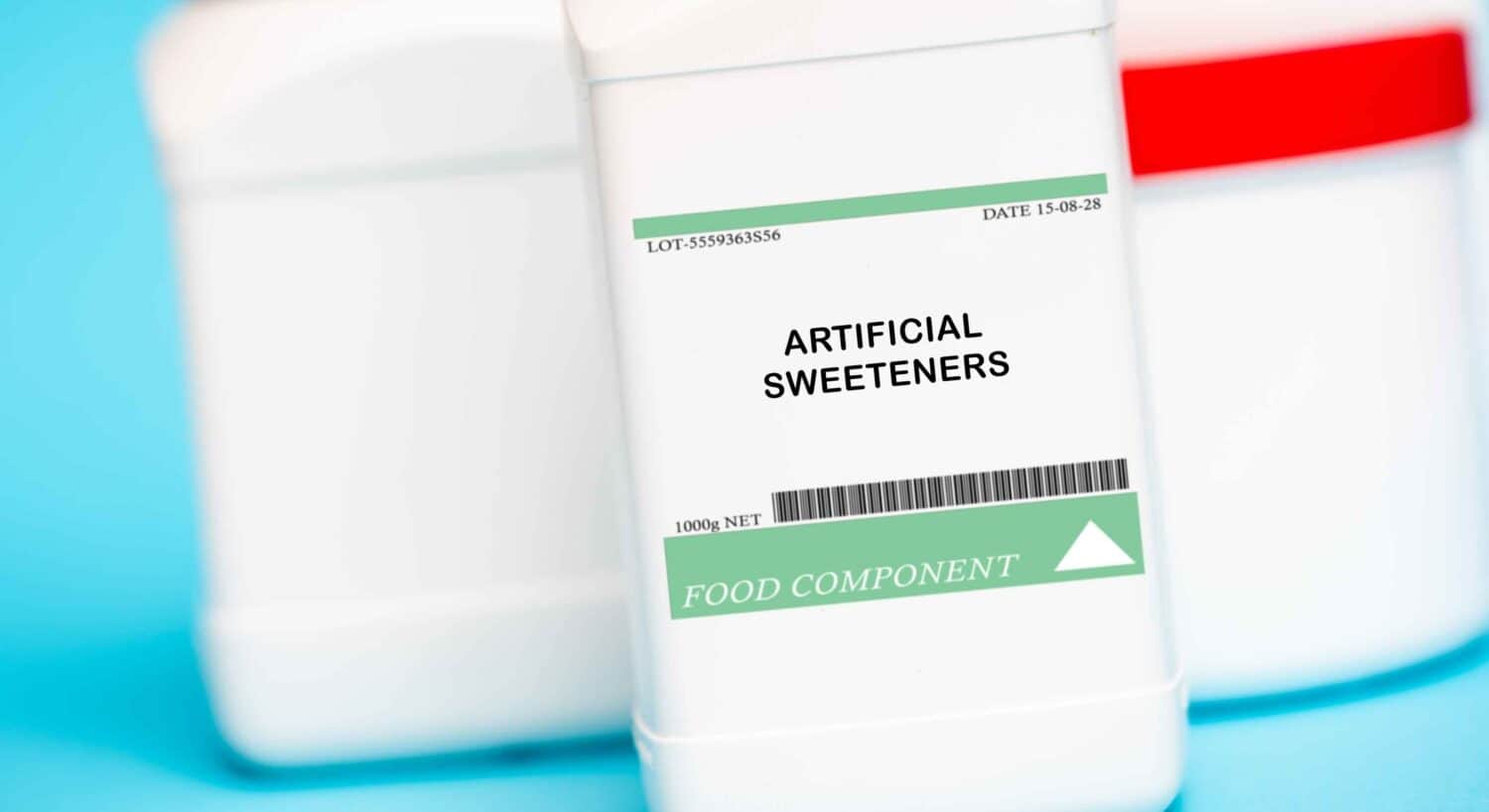
©luchschenF/Shutterstock.com
Fortunately, most of the above symptoms disappear once you stop using aspartame.
How Do Artificial Sweeteners Taste?
These sweeteners have an intense sweetness and can significantly impact taste preferences over time. Keep in mind that individual responses to sweeteners can vary.
Bottom line:
It's important to remember that moderation and individual considerations play a key role in using any artificial sweetener. Some individuals may experience digestive discomfort, such as bloating or gas, when consuming products containing artificial sweeteners. Monitor your response if you have a sensitive digestive system. Consult with a healthcare professional if you notice any adverse reactions or allergies.
Maple Syrup vs. Artificial Sweeteners: Nutritional Breakdown
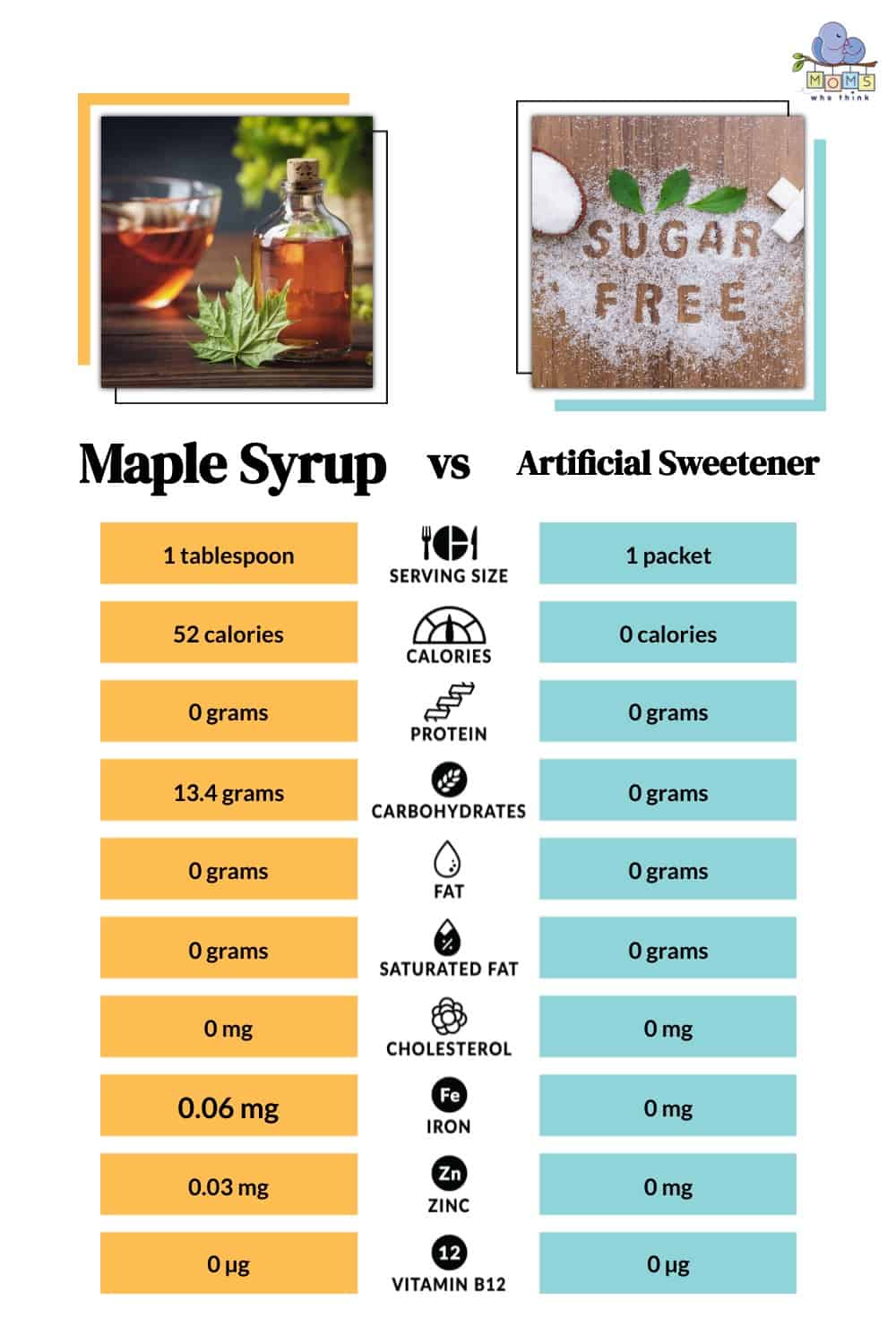
Can Your Body Break Down Maple Syrup?
Yes! Why? Because it’s a natural sugar. Your body recognizes this, and maple syrup, like any real sugar, converts to glucose in the intestines before traveling into the blood. Your body understands exactly how to process it.
Can Your Body Break Down Artificial Sugars?
The short answer: No. This is because your gut reacts differently to artificial sweeteners than to natural sweeteners. The digestive system isn’t designed to process these artificial chemicals in the same way it does with natural sugars. So, even though they don’t spike your sugar levels, they still make an impact on your body as they pass through your gut.
For instance, when you eat sweet foods that contain real sugar, your body knows exactly what hormones to release to speed up your metabolism. And this helps control your blood sugar and appetite. But artificial sweeteners “trick” your body. How? You see, your body doesn’t recognize what’s going on. In other words, since it’s not real sugar, your body doesn’t release the right hormones to boost metabolism.
And here’s another problem: if you eat high-calorie foods later, your body might not be ready to process the sugar properly. That could lead to higher blood sugar and weight gain.
Final Thoughts
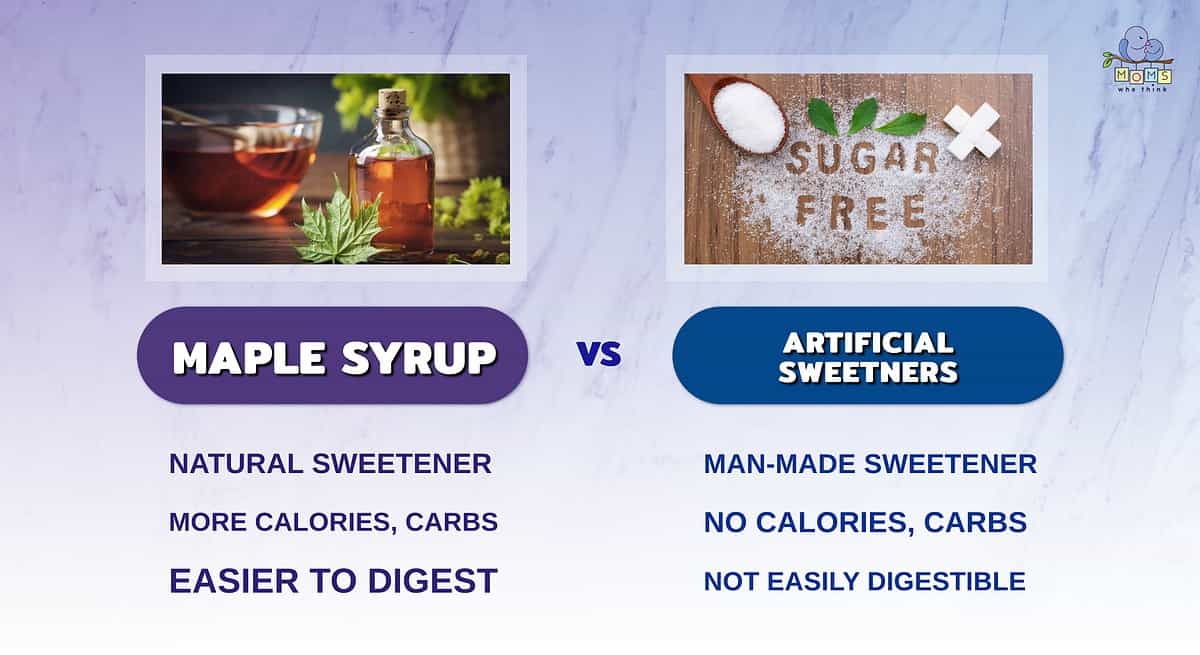
As with any sweetener, moderation is the key. It’s obvious artificial sweeteners are not the first pick of the crop. Maple syrup is a natural sweetener that comes from the sap of maple trees and can be a welcomed addition to maintaining a healthy, balanced diet. It has minerals and more calories compared to artificial sweeteners. On the other hand, artificial sweeteners are man-made chemicals that your body cannot fully break down. So, while it provides sweetness with little to no calories, it does present noteworthy health concerns.
While there are slight similarities, maple syrup and artificial sweeteners are completely different in both taste and ingredients. Let's take a look at some of those differences:
- Maple syrup may be made of simple ingredients; however, it is higher in calories than artificial sweeteners.
- With that said, maple syrup is a natural sweetener, whereas artificial sweeteners are not.
- Official sweeteners are not as easy to digest as maple syrup.
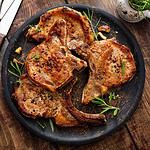
Maple-Pecan Pork Chops
- Total Time: 28 minutes
- Yield: 4 Pork Chops 1x
Ingredients
- 4 boneless pork loin chops, cut 3/4-inch thick (about 1 pound)
- Salt and black pepper
- 4 tablespoons butter or margarine, softened
- 2 tablespoons maple-flavored syrup
- 1/3 cup chopped pecans, toasted
Instructions
- Sprinkle both sides of the chops with salt and pepper.
- In a 12-inch skillet, cook chops in 1 tablespoon of the butter over medium-high heat for 9 to 13 minutes or until juices run clear (160°F), turning once.
- Transfer chops to a serving platter.
- In a small bowl, combine the remaining butter and the syrup.
- Spread butter mixture evenly over chops.
- Let stand for 1 minute or until melted.
- Sprinkle with pecans.
- Prep Time: 15 minutes
- Cook Time: 13 minutes
- Category: Main Course
- Method: Pan-Frying
- Cuisine: American
Nutrition
- Serving Size: 1 Pork Chop
Sweet Recipes
Sugar-Free Cranberry Oatmeal Cinnamon Cookies
- The must-have convenient reference guide for every home cook!
- Includes more than 8,000 substitutions for ingredients, cookware, and techniques.
- Save time and money on by avoiding trips to grab that "missing" ingredient you don't really need.
